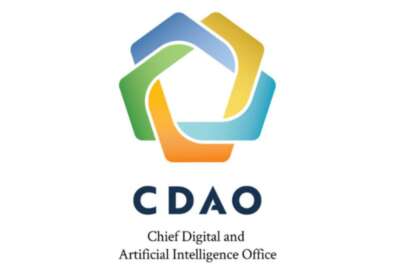Insight by Maximus
How customer experience can transform the Defense Department
Integration of all data elements about each user, combined with integrated systems and processes are all required for digital transformation.
The Defense Department is catching on to the customer experience movement. The “customers” it will focus on are its own people – members of the armed services.
Why? If modern, low-friction processes let service members deal with the routine management of their service lives, they might be more inclined to stay in the service longer. And by modernizing as an employer, perhaps the military can have an easier time recruiting.
“The Department of Defense hasn’t really thought about it that way,” said Pamela Powers, the defense market lead at Maximus. “But I think they’re starting to shift, and the culture is shifting.”
Powers knows whereof she speaks, as a 28-year veteran of the Air Force. She noted that the DoD’s chief information officer recently set up a customer experience office.
She advised that office to think in terms of “the entire journey of a service member. Everything that they touch has some sort of user interface, from the time they first access recruiting, to the time they get their training, to their promotions and their retention programs, to their retirements.”
Quite simply, the touch points along that journey must undergo digital transformation, Powers said on Federal Monthly Insights – Customer Experience in the Department of Defense.
“The current generation is digitally focused,” she said. Today’s service members “have a digital mindset, they grew up knowing what good human centered design looks like, and what good customer service looks like in their daily lives.”
She added, “There are so many use cases across the entire ecosystem that are ripe for a human-centered design transformation.”
Such transformation is certainly doable, Powers said. She highlighted the Veterans Affairs Department, where she also worked at the executive level after leaving the military. Stung by basic problems with appointment scheduling a decade ago, VA embarked then on a journey of transformation.
“They’ve really been a model for the entire federal government,” Powers said.
It starts with data
Powers said a CX approach starts with integrating all of the data about an individual, so that whether a person accesses his or her organization online or via a call center, the data will be available to power the response.
In the case of a call center, Powers envisioned a call receiver being able to acknowledge callers in terms of, say, their position or rank, recent promotions, family status, and recent emails.
Powers postulated a call center response something like this: “Hi, major Smith, how you doing today? How’s your family doing today? How can I help you? I see that you sent an email last week about your promotion, and I see that you’re missing a record. How can I help you get that record into your system to make sure that you’re meeting the board correctly?” She added the importance of “following up with them, once they get that documentation.”
Such a data-driven, user-oriented transaction “makes that soldier feel valued and respected,” Powers said. “And it allows that soldier to be focused on the mission at hand and not be focused on administrative issues.”
Powers cited permanent changes of station as a function most definitely ripe for transformation.
“I know when I moved to a new location, that process was incredible painful,” Powers recalled. Relocation involves personal logistics, financial considerations, sometimes worrying about childcare, and figuring out housing at the destination – all while the service member is concerned about the new job itself.
Achieving a modern, customer-centric experience in such a use case requires several elements behind the scenes, Powers said.
“I think of it as an ecosystem of tools, processes, technology, and data that all interact to create an experience,” she said. “It’s not just a front-end website, or a call center or user interface. It’s all the systems, the people, the processes and the technology that, behind the scenes, have to talk to each other, and that have to interact.”
Powers said artificial intelligence can aid in bringing together total data about a customer, and that many private sector organizations have made progress there. DoD, she said, must catch up to that capability and also to the best practices in journey mapping and interface design.
But the latter elements – journey mapping and good interfaces – are insufficient if the data connected to the customer isn’t there.
She recalled from her Air Force days having to get things like benefits or pay issues resolved.
“You might call into a call center, and they might have very empathetic employees answering those calls,” Powers said. But then “they’ll make a ticket, ask you to fax in some documents. But you never know if those documents got to the right person.” She added, “There’s no follow through, you’re not able to go on a website and really access and see what the status is.”
That’s why back-end processes and systems must interoperate, “and then it has to be intuitive for that call center person, so they know how to handle that situation with each individual person.”
Copyright © 2024 Federal News Network. All rights reserved. This website is not intended for users located within the European Economic Area.





